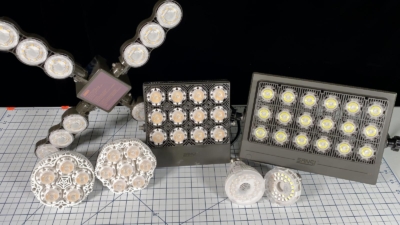Output Frontier Speakers Review
I recently purchased the new Output Frontier studio monitors, and I wanted to give you my first impressions. Over the last several weeks, I’ve been working on a complete makeover of my home office/music studio. It’s just a small 10×10’ spare bedroom in our 1913 home. This revamp includes new furniture, and I decided to go with the Platform desk from Output, along with their matching Sidecar for more gear and storage, plus their hand-crafted steel speaker stands. I’m still putting the finishing touches on this revamped workspace, and I’ll post more about it as soon as it’s completed.
I’ve been using Output’s audio plugins and virtual instruments for several years, and more recently their Arcade subscription-based sample instrument. I’d been eyeing their studio furniture for some time. I liked the look, and I especially liked how the integrated rack space and sliding keyboard shelf would free up space in my small studio. I did have to wait months for delivery, but I’m really happy now that it’s assembled and in place.
I guess I’ve accidentally become kind of an Output fanboy. So when they announced their Frontier speakers with technology from Barefoot Sound, I was very interested. Barefoot monitors are in top studios around the globe, and Output founder Gregg Lehrman calls Barefoot “the Rolls Royce of speakers.” Frontiers are bi-amped two-way speakers with 6.5” dual-concentric drivers in a front-ported enclosure.
The current direct to buyer price of $1399 per pair is less than half the price of the least expensive pair of speakers offered by Barefoot. The 30-day no-risk return policy made me feel confident about buying them sound unheard. So I placed my order, and the package arrived in just a few days.
The base is solid walnut for a very premium look. While logos were plastered all over the packaging, the front of the speaker is very clean with na logos or markings at all.
On the back, there’s an input jack that accepts either a balanced XLR or 1/4” TRS cable, an RCA jack for unbalanced sources, and a volume knob which moves in discrete steps. There are Output, Frontier and Barefoot logos just below. There are no EQ adjustments. I’m guessing this is because Barefoot’s philosophy is that all their speaker designs are designed to deliver a flat, accurate response.
At the bottom, there’s the power receptacle and the power switch. A label is affixed with a manufacturing date of August 2020. The serial numbers on the speakers make me wonder if these are the 223rd and 224th units to be made. While these speakers are designed in Los Angeles, it probably won’t come as a surprise that they’re manufactured in China. I’m sure that’s how Output is able to offer these at such an attractive price point.
On the left is a switch you probably haven’t seen before on a studio monitor. It’s the Eco Mode switch. If this is turn on, the speaker goes into standby mode if no signal is received for 30 minutes, dramatically reducing the power draw. The speakers wake up after a split second as soon as a signal is detected. I can’t imagine why anyone would not take advantage of this innovative feature.
After I plugged in the cables and fired them up, I was surprised that there was lighting behind the gap between the top and the base of each speaker.. I never noticed it in the photo on the Output website. A very cool look. But speakers are about sound, not appearance. I loaded up a recent project in Logic and hit the spacebar. I listened for awhile, and then I A/B’d them with the smaller iLoud MTM speakers that sit on my desk. I also listened to some reference tracks. So I suppose you’re wondering about my first impressions.
The truth is, I was completely blown away. The sound is so precise and detailed, without apparent coloration. They seem to retain these characteristics at all volume levels. My previous speakers were Dynaudio BM5As with a BM9S subwoofer, and while I relied on them for over a decade, the Output Frontiers play in a whole other league. And I’m not missing the subwoofer, because the bass is so much tighter and more focused. There’s no mud, unless it’s actually in the mix.
In the next couple of weeks, I’ll be installing some acoustic treatment. After that’s in place, I’ll calibrate the speakers using my ARC System 3 Room Correction microphone and software. Then I’ll give you an update. I have a feeling I’m going to be in a long-term relationship with my Frontier speakers. To ensure that can happen, I’ve taken a couple of protective measures.
The left speaker and stand are right near the doorway to the room, and after the first time I almost knocked them over, I looked for a way to protect my investment. The rag carpet allowed me to work zip ties through the carpet and around each of the four legs of the stand. The speakers are then secured to the stand with an extra long 48” bungee cord. Watch the video if you want to see more. This is what you need to do if you’re clumsy like me. I wouldn’t say it would be impossible to knock it over now, but you’d really have to try.
Now for that scoop on Output. While searching for some info for this video, I ran across an article on dot.la, a blog covering LA tech startups. Output scored $45M in venture capital last year in order to double its staff and expand its product offerings. It’s an interesting read, and I’ll include a link in the video description. Wonder what creativity-enhancing products they’ll launch next!
This post contains Amazon affiliate links. As an Amazon Associate I earn from qualifying purchases.




Leave a Reply
Want to join the discussion?Feel free to contribute!